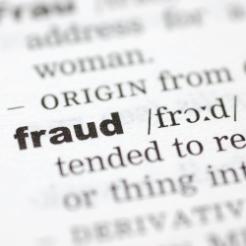HMRC’s policy adviser on charities has emphasised the scale of the charity fraud and tax-avoidance problem – by describing it as an industry of its own.
Cathy Wilson took to the podium at this week’s Charity Tax Group conference, where she reassured the audience of charity finance professionals about HMRC’s prevention methods and outlined how seriously it takes the issue.
She even opened her presentation by expressing her surprise that the session had been entitled ‘alleged’ tax avoidance and fraud.
“I chuckled a little when I saw the agenda item,” she said. “Unfortunately, [these issues] are a genuine reality for HMRC. Just because you’re paranoid it doesn’t mean they’re not out to get you – and the tax-avoidance and fraud industry is out to get charity tax reliefs."
Wilson stated that HMRC administers around £3bn of tax reliefs for charities and donors each year, with about £1bn of that paid out, mostly as gift aid. “So it’s not surprising that unscrupulous people want a share of it, they see it as ‘free money’ and want to get hold of it, to see if they can reduce their tax bills by using these charity and donor reliefs,” she admitted.
Keeping the front door secure
Wilson expressed HMRC’s job as “to protect the Exchequer as well as to ensure we are getting the money to the people who actually are entitled to the money and reliefs”. She described it as a balancing act of making it “as easy as possible for the good guys and as bad as possible for the bad guys”.
“We check anyone who comes along and says 'I’m a charity and I want charitable tax reliefs’,” Wilson continued. “We check the people behind those organisations and have a front door that we police quite strongly – once you are through the front door, you have access to all the reliefs available.
“We’re not prepared to just take anyone in, and if someone moves on [from the charity] we’re not prepared to just take on the new person, we want to be introduced by the people we already trust to the new person. We’re not going to act on the instructions of anyone we don’t know.”
Three-pronged avoidance approach
Wilson went on to outline the three-stage charity-specific prevention method HMRC utilises, starting with the anti-avoidance rules, associated with lots of specific claims and reliefs such as shares.
She moved onto the fit and proper persons test, introduced in 2010 as a “controversial change, but an essential tool”. The tax reliefs were previously structured on a “claim now and we’ll check later” basis, and unscrupulous claimants would disappear before HMRC could find out they were fraudsters. It had no statutory basis for dismissing a claim at the start – but with the fit and proper persons test, it now does.
Wilson revealed that the fit and proper persons test has been used around 200 times to prevent fraud in the three years since it has been operating. “It has worked well, and no one has complained,” she said.
Finally she outlined the tainted charity donation rules. These were introduced in 2011 to replace the substantial donor rules which “worked quite well against avoidance, but were lots of horrible paperwork for charities”.
She explained: “The rules are meant to be a deterrent. They’re centred on a main purpose test – you will lose your tax relief if you have entered into certain arrangements associated with the donation which you wouldn’t have entered into if you didn’t expect to get a financial advantage. It helps to deter the avoidance industry – at least a bit. The industry is very creative, determined and ambitious.”
HMRC’s disclosure restrictions ‘create a vacuum’
Without naming names, instead using the pseudonym ‘Project 2010’, Wilson spoke of a recent gift aid avoidance scheme.
“HMRC works extremely closely together with the Charity Commission,” she said. “I can tell you that we knew about a gift aid avoidance scheme that we published in March 2010 on our website. Our view at the time, and now, is that there is no gift.
“We haven’t had any repayment of tax to anyone who’s used that particular scheme, and we are planning to publish an update on it in a few weeks or months.”
From the audience, Charity Finance editor Andrew Hind ventured that the Cup Trust case throws up the problem that since HMRC can’t comment on individual taxpayers' circumstances, this constrains it from doing what the sector would like to see – statements that such schemes will never be allowed to work.
“HMRC’s inability to comment has created a huge vacuum,” Hind said. “I wonder what your views are on that difficulty?”
Wilson admitted that it was a constraint, “one that we have to live with”.
“I can only say that ‘Project 2010’ is not something we would recognise as working.”
Big four ‘use insider knowledge to dodge tax’
Illustrating that the problem is wider than the charitable sector alone, the Commons Public Accounts Committee (PAC) recently reported that the ‘big four’ accountancy firms Deloitte, Ernst & Young, KPMG and PricewaterhouseCoopers have been using their staff seconded to the Treasury to gather intelligence on how to facilitate tax avoidance.









